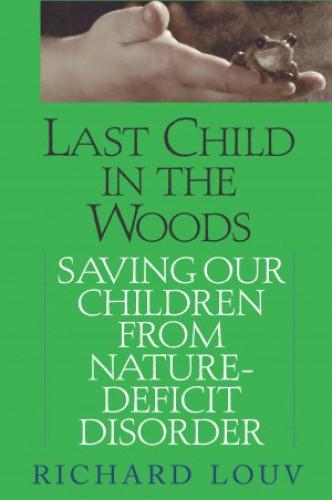by By Richard Louv
Algonquin Books, 2005
It’s a pleasant Saturday morning, and a small suburban park is filling with people. While the adults set up lawn chairs and dig out soccer equipment, the youngsters frolic on the grass. Just beyond the park’s mown periphery stands a patch of deserted woods that is separated from the playing field by a tall chain-link fence. Herein lies what might be called Richard Louv’s nightmare. Is the fence meant to keep the children in or the woods out?
Louv’s book, Last Child in the Woods, offers a chilling examination of the present state of modern society and where it’s headed if a course correction isn’t undertaken soon. He describes the unbalanced world in which children are more familiar with TV characters and computer games than the wild, unstructured terrain that exists beyond parks, playgrounds, and strip malls. As one child quoted in the book says, “I like to play inside better because that’s where all the outlets are.” Unfortunate youngsters such as this are suffering from what Louv calls “nature-deficit disorder,” a malady which though non-clinical must still be taken seriously.
We should be alarmed that woods, mountains, and fields represent alien territory for most kids. The absence of a direct relationship with these natural places imperils children’s physical and emotional health, Louv warns.
Youngsters need exposure to nature, but they’re not getting it for several reasons, according to Louv, including adults’ often irrational fear that menacing strangers lurk behind the next tree or around an approaching bend along the forest trail. Communities and developers also thwart kids’ interaction with nature by creating parks that feature only grassy playing areas and exclude meadows and woods. Homework and after-school activities conspire to make it harder than ever for children to simply play outside, and it’s showing in their bulging waistlines, Louv contends.
His is a compelling argument and one that calls upon us to help children establish a relationship with nature in which they can roam freely and fearlessly in the woods, build tree houses, explore streams, and muddy their shoes. His well-supported case is easily grasped and possesses the true ring of a hawk’s cry.
Fortunately, there is a course that can be followed to help ensure a brighter outlook for future generations, Louv advises. We must reorder our lives to make time for nature. We must take our children into the woods and help them see the wonder that exists there. We must advocate for schools to include more nature-based instruction and for governments and developers to preserve and provide access to forests, meadows, and streams.
“Healing the broken bond between children and nature may seem to be an overwhelming, even impossible, task,” he writes. But it is one that must be undertaken, says Louv, lest we become fenced off from the woods entirely, and lose our way in an artificial world of our own making.


